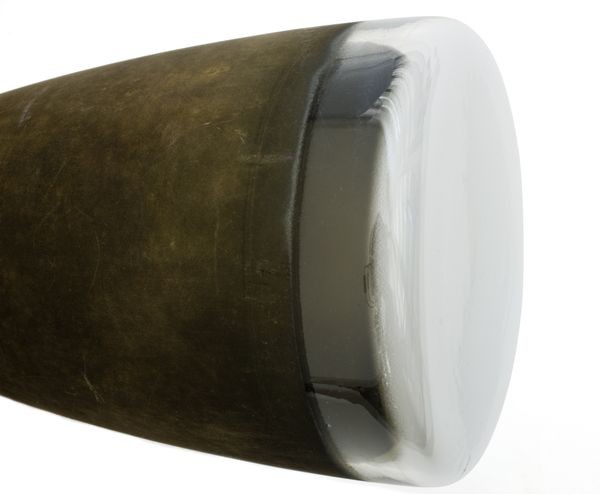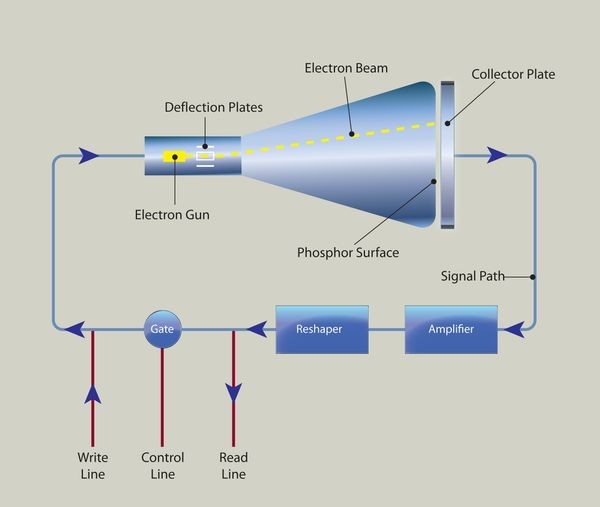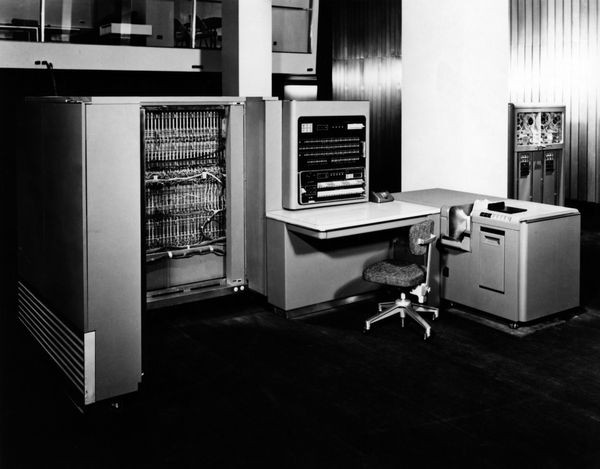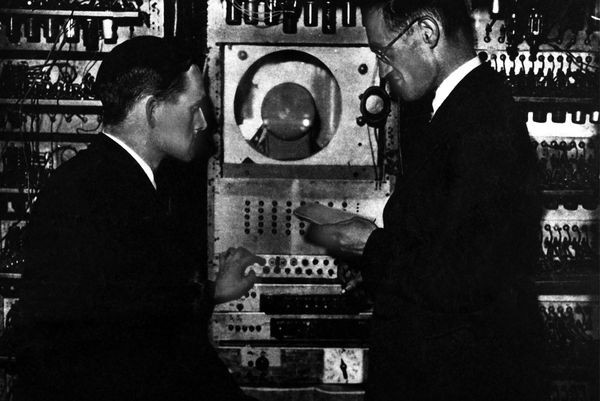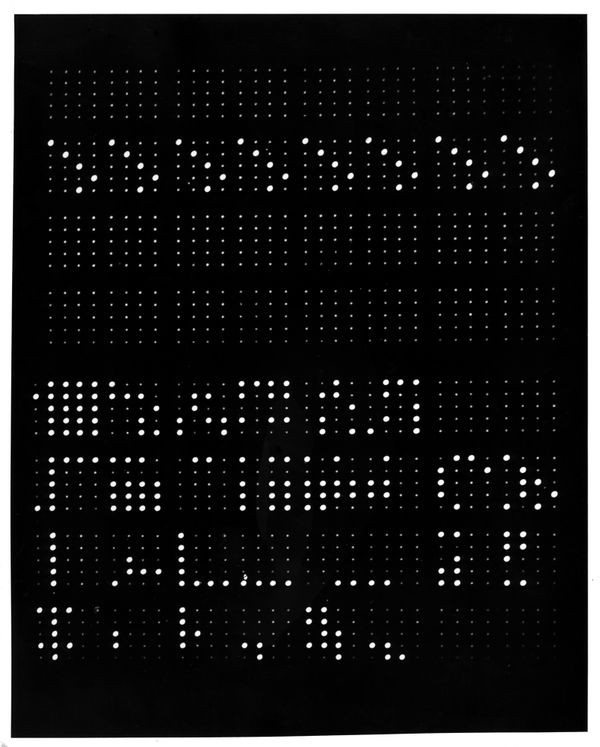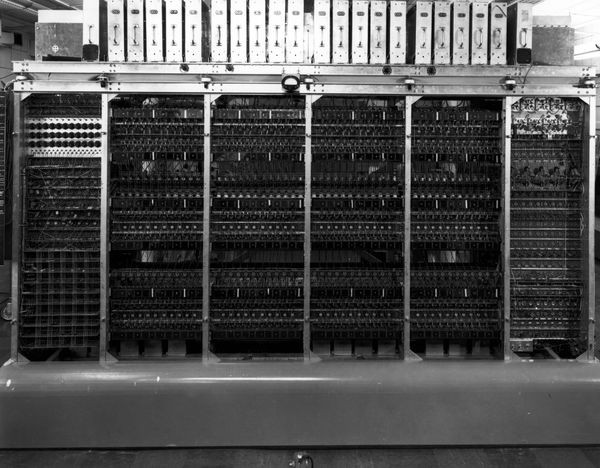Williams-Kilburn Tubes
Williams-Kilburn tube from an IBM 701 computer
Electrostatic memory tubes could store 512 to 2048 bits of data as dots on the screen.
Williams-Kilburn Tubes
Electronic computers offered unprecedented speed. But mechanical memory—slowed by moving parts—was a nagging speed bump.
The Williams-Kilburn tube, tested in 1947, offered a solution. This first high-speed, entirely electronic memory used a cathode ray tube (as in a TV) to store bits as dots on the screen’s surface. Each dot lasted a fraction of a second before fading, and a mechanism was incorporated for automatically refreshing these dots.
Its roots stretched back to 1946, when British researcher F.C. Williams saw cathode ray tube storage at MIT, in an extension of the wartime radar work on permanent echo cancellation. Williams saw that the basic problem was charge decay, and he decided to tackle this problem so that the CRT technique could be improved upon for use in computers. Ultimately, however, the unreliable Williams-Kilburn Tube proved a technological dead end.
F.C. Williams was a true example of the British 'string and sealing wax' inventive genius, who had built a primitive electronic computer out of surplus World War II radar parts strictly on his own inspiration….
IBM 701
The 701 was IBM’s first commercial digital electronic computer. Its unreliable Williams-Kilburn tube memory caused an average time-to-failure of about 15 minutes.
View Artifact DetailMANIAC Williams Tube memory
The MANIAC, which did hydrogen bomb design calculations, used 40 of these tubes to store 1024 40-bit numbers.
View Artifact DetailTom Kilburn and Freddie Williams
Inventors of the Williams-Kilburn tube, Tom Kilburn (left) and Freddie Williams (right), pose in front of the Manchester Mark I computer. This early random-access memory was used in several early computers.
View Artifact DetailWilliams-Kilburn tube
A close-up view reveals dots (ones) and spaces (zeroes) on the face of a tube. The bits had to be refreshed before the dots faded, in less than a second.
View Artifact DetailMANIAC computer with covers removed
The MANIAC computer was used for atomic bomb design. The Williams-Kilburn tubes providing its memory are in the silver boxes on top of the computer.
View Artifact DetailERA 1103
The huge 1103 computer was based on the secret Atlas II military computer system designed by ERA. It used Williams-Kilburn tubes for memory.
View Artifact Detail